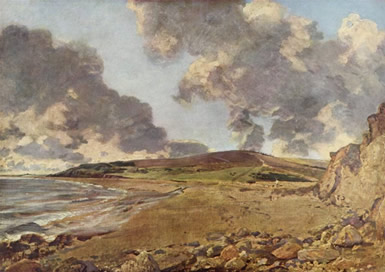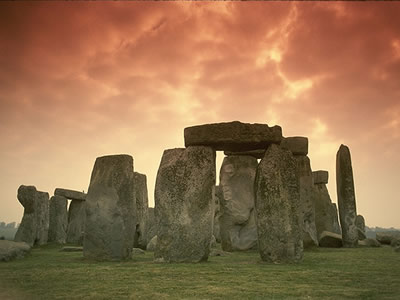Culture, Myth and Art
Objects in the sky and other natural phenomena have inspired people throughout the ages. Browse our collection of myths, folk tales, and stories of many types about the Earth and sky. Check out artwork, poetry, books, and movies that portray the natural world
British painter John Constable (1776-1837) made many paintings of clouds. It looks like he depicted towering
cumulus clouds in this painting of Weymouth Bay. These clouds may have turned into
cumulonimbus and a
storm later in the day.
Left section of the east frieze of the Siphnian Treasury (c. 525 B.C.) depicting from left to right
Venus,
Diana, and
Apollo. This portion of the frieze shows the gods sitting, watching the Greeks raid Troy.
Dutch painter Jan Vermeer painted the town of Delft, Holland where he lived for his entire life (1632-1675). Above the town, he painted
stratocumulus clouds in the sky. Stratocumulus clouds usually produce only light precipitation, in the form of
drizzle.
For the Aztecs, who lived in central Mexico,
Tonatiuh was a
Sun god. Aztecs believed that four suns had been created in four previous ages, and all of them had died at the end of each cosmic era. Tonatiuh was the fifth sun and the present era is still his. The carvings on this sunstone represent the four cycles of creation and destruction in the Aztec creation story. The skull at the center depicts the god Tonatiuh.






No comments:
Post a Comment